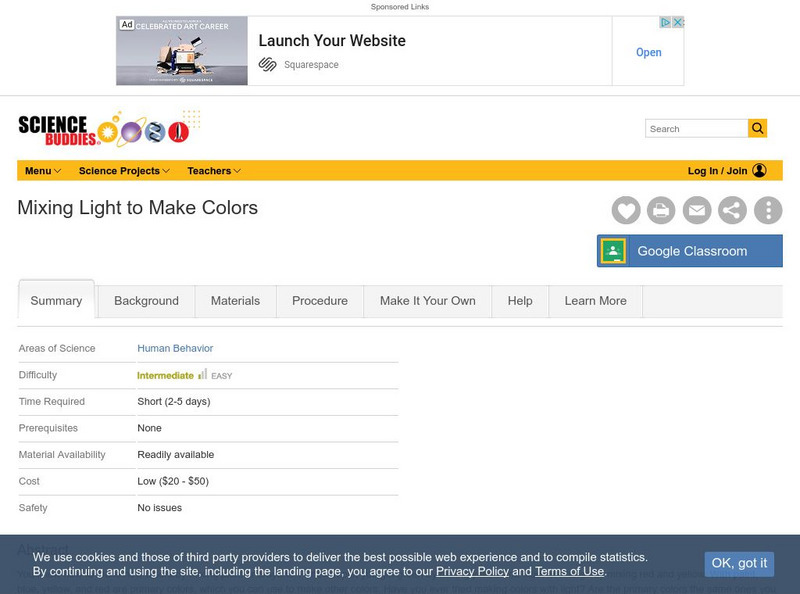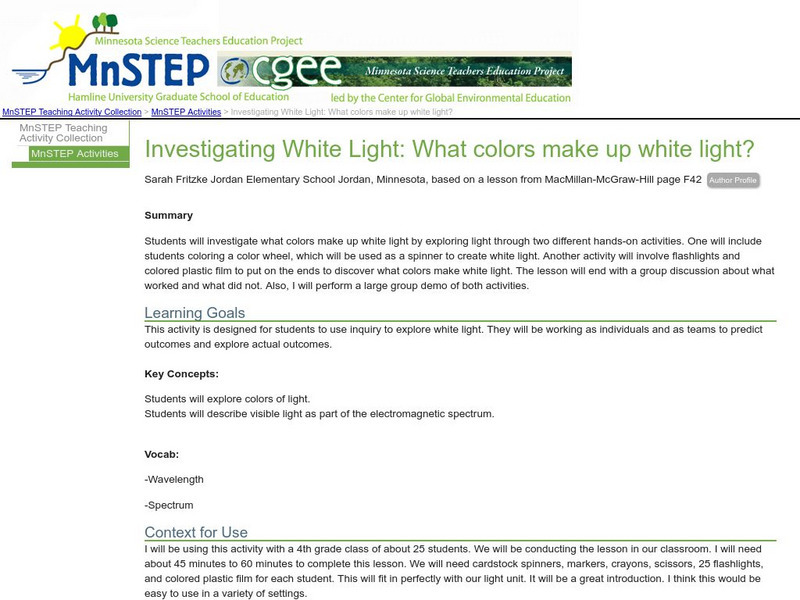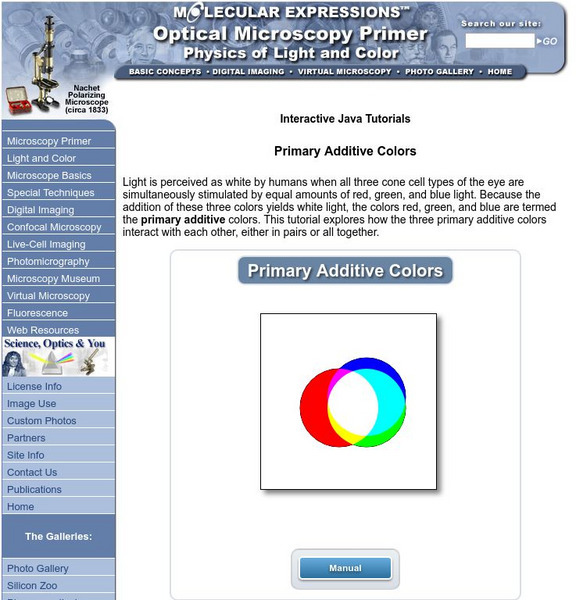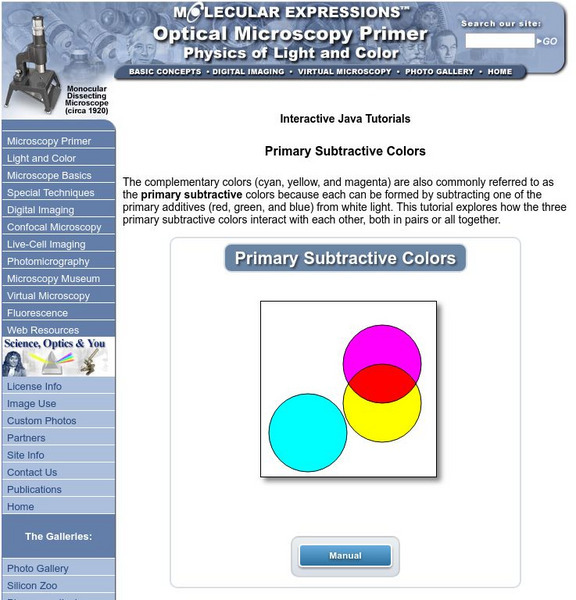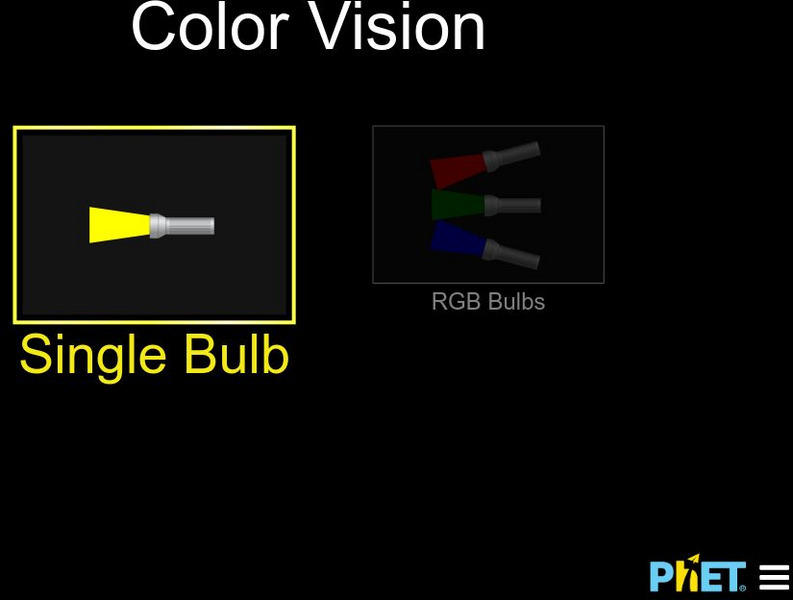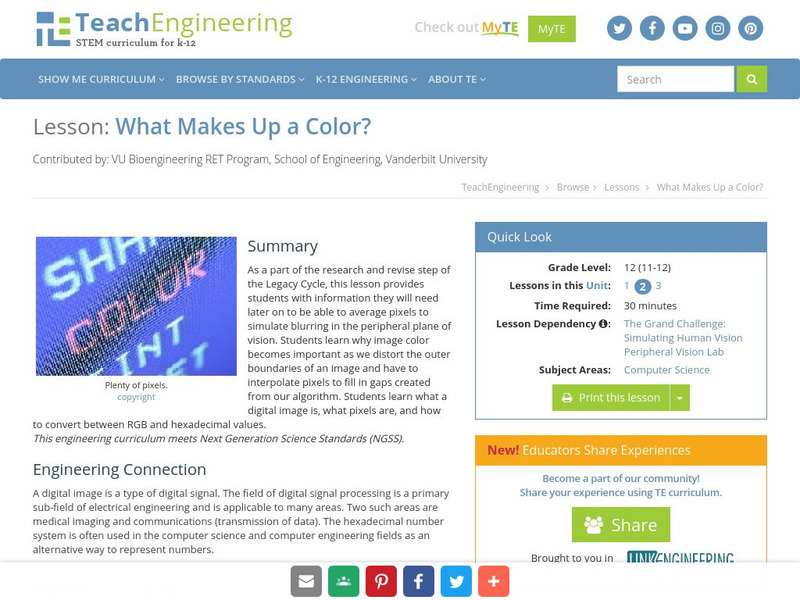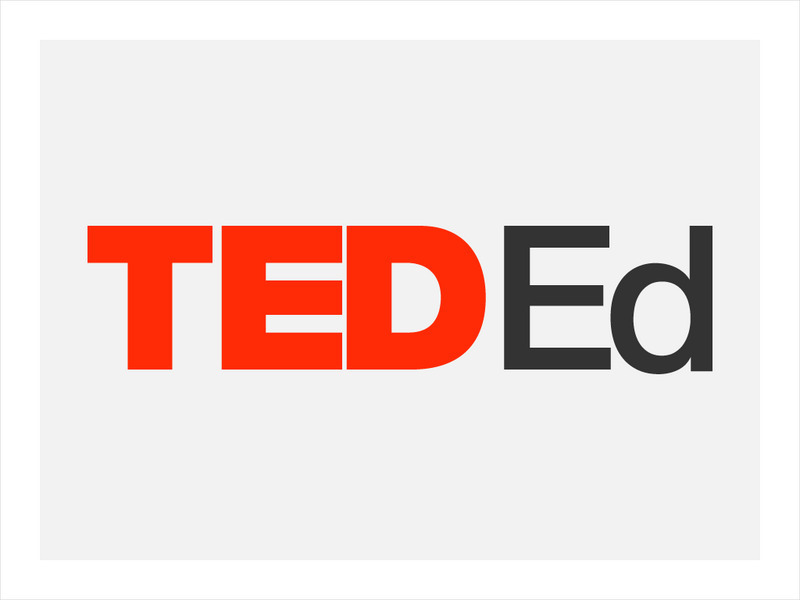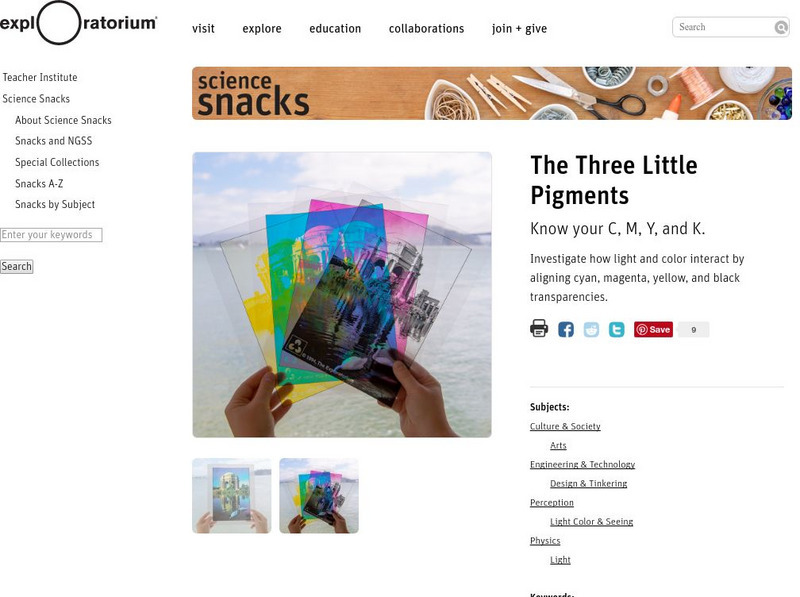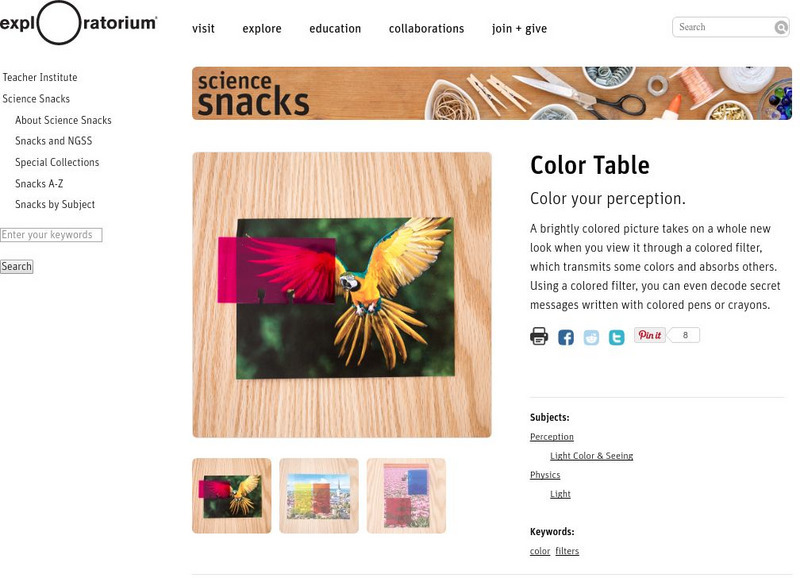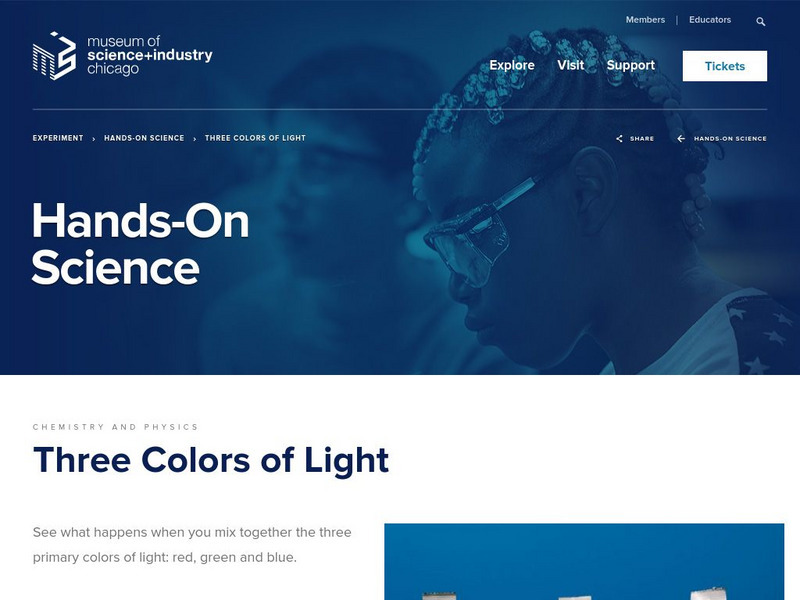Curated OER
The Photoelectric Effect in Photocells
Illuminate your physics class with this examination of a photovoltaic cell. Teach the structure and operation of the device using a diagram. Then make a human-powered, larger-than-life sized model of a PV cell. Learners become electrons...
Curated OER
Light - Plant Science Chapter #8
A brief presentation provides notes on light for agriculture pupils. Topics covered are light quality and duration, how resulting temperatures affect crop selection, vernilization, and bolting. Even though this is titled "Light," it...
Curated OER
Color
In this colors of light worksheet, students read information about color and list in order the 7 colors of light. Students answer 4 questions and draw colored ray diagrams to explain the answers.
Exploratorium
Exploratorium: How to Build a Spectroscope
Instructions for how to construct a spectroscope from basic materials, which can be used to study colors produced by light from different sources. Adult supervision may be required for the use of the utility knife. Includes an...
Science Buddies
Science Buddies: Mixing Light to Make Colors
You know how to make new colors by mixing paint or crayons. For example, you get green by mixing yellow and blue, or orange by mixing red and yellow. With paint, blue, yellow, and red are primary colors, which you can use to make other...
Science Education Resource Center at Carleton College
Serc: Investigating White Light: What Colors Make Up White Light?
Two different hands-on activities that explore white light and the colors that make it up. In one activity students will create white light by using a color wheel. In the other activity students discover the colors that make white light...
Florida State University
Florida State University: Molecular Expressions: Primary Additive Colors
Manipulate the primary color circles of light to see how overlapping the circles affect the colors. An explanation is included.
Florida State University
Florida State University: Molecular Expressions: Primary Subtractive Colors
Manipulate "pigmented" color discs to see how mixing subtractive colors affect the overall color.
University of Colorado
University of Colorado: Ph Et Interactive Simulations: Color Vision
Make a whole rainbow by mixing red, green, and blue light. Change the wavelength of a monochromatic beam or filter white light. View the light as a solid beam, or see the individual photons.
TeachEngineering
Teach Engineering: Rgb to Hex Conversion
Students practice converting between RGB and hexadecimal (hex) formats. They learn about mixing primary colors in order to get the full spectrum of colors and how to average pixel values.
TeachEngineering
Teach Engineering: What Makes Up a Color?
As a part of the research and revise step of the Legacy Cycle, this lesson provides students with information they will need later on to be able to average pixels to simulate blurring in the peripheral plane of vision. Students learn why...
University Corporation for Atmospheric Research
Ucar: Blue Skies and Red Sunsets
Find out how some wavelengths of light are scattered more than others producing blue skies and red sunsets.
American Museum of Natural History
American Museum of Natural History: Play With Color and Light
See what happens when you mix different colors of lights.
Florida State University
Florida State University: Molecular Expressions: Primary Colors
The concept of colors is discussed on this page. Read about primary colors, how complementary colors are created, what the process of color subtraction is, pigments and dyes, plus more. Also included are interactive Java tutorials.
University of Illinois
University of Illinois Urbana Champaign: Light and Optics
Rainbows and sunsets are called "atmospheric optics". They can be caused by light being absorbed, reflected, scattered, refracted, or diffracted by particles in the atmosphere. Learn all about different atmospheric optics along with...
TED Talks
Ted: Ted Ed: What Is Color?
Colm Kelleher describes the physics behind colors- why the colors we see are related to the period of motion and the frequency of waves. [3:09]
Exploratorium
Exploratorium: Science Snacks: Soap Film on a Can
Investigate the properties of light by exploring the color effects produced when light is shone on soap film.
Exploratorium
Exploratorium: Science Snacks: Soap Bubble Shapes
Using straws and soap, you can create geometric shapes to make a colorful art display when light shines through them.
Exploratorium
Exploratorium: Science Snacks: The Three Little Pigments
For this activity, you print different colors of the same image onto acetate, then explore the different color effects you get when they are overlaid on each other in various combinations.
Exploratorium
Exploratorium: Science Snacks: Cd Spectroscope
Analyze light by creating a CD spectroscope in this activity. See the whole spectrum of light with the spectroscope.
Exploratorium
Exploratorium: Science Snacks: Color Table
Did you know that different-colored backgrounds cause colored objects to look different? In this investigation, students will experience this phenomenon.
Museum of Science
Museum of Science and Industry: Online Science: Three Colors of Light
An experiment where students combine solutions from red, green, and blue glow sticks to make different colors and to make white light.
CK-12 Foundation
Ck 12: Physical Science: Color
[Free Registration/Login may be required to access all resource tools.] Overview of the different colors in visible light and how they relate to its wavelength, how a prism separates visible light into its different colors, the colors of...
Optical Society
Optical Society of America: Optics for Kids: What Causes Rainbows?
An experiment to demonstrate how to make a rainbow and why they form.






